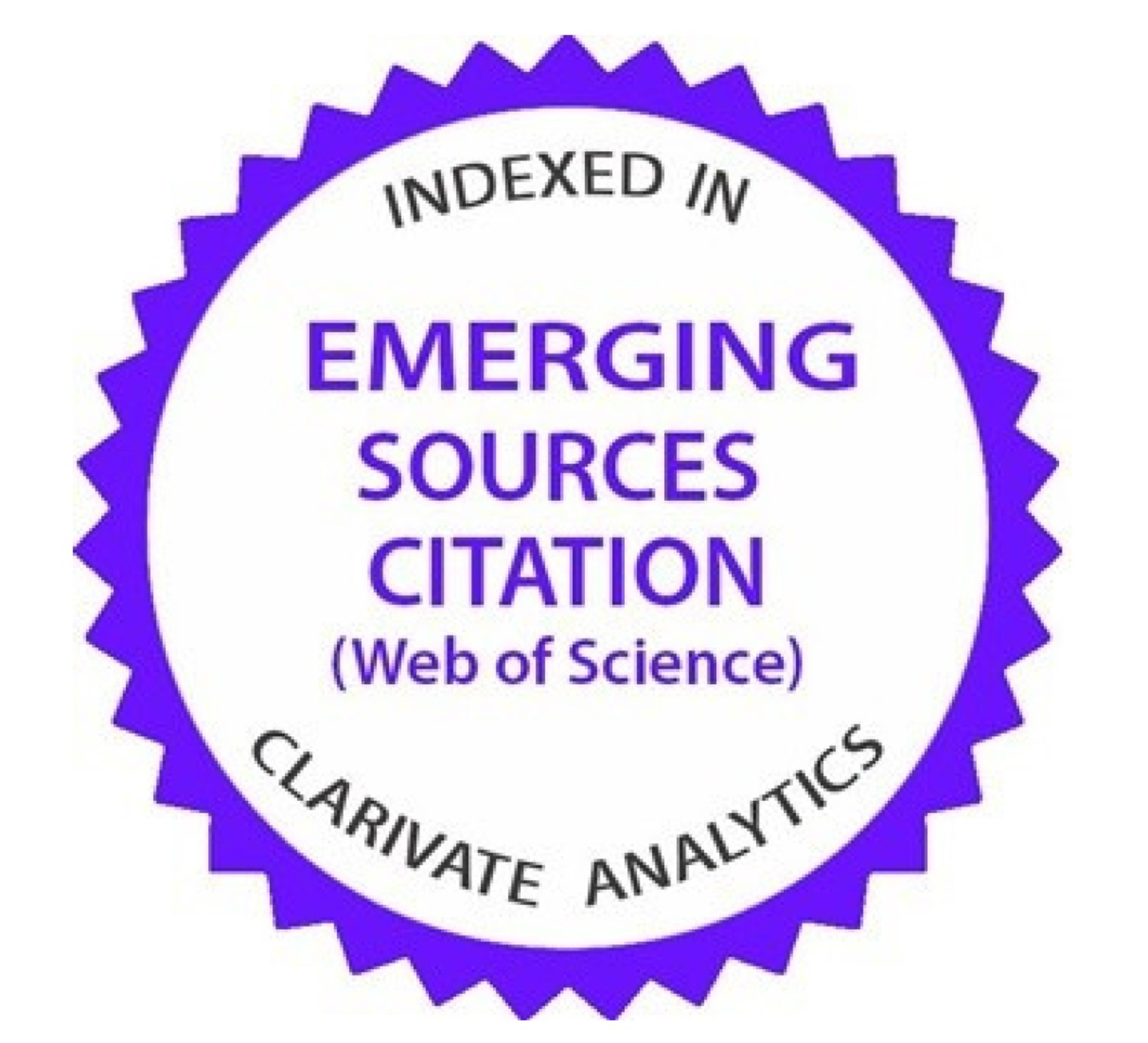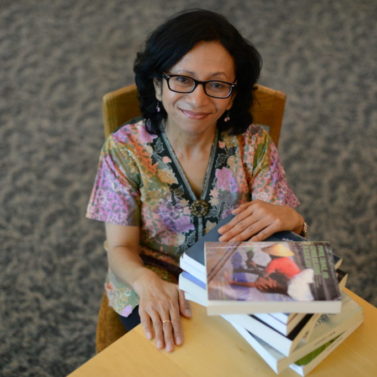Inter actor relations in the veneration of Chinese Sea Goddess Mazu (媽祖, Māzǔ), at Tjoe Tik Kiong (慈德宮, Cí dé gōng) Temple, Pasuruan
Downloads
The Tjoe Tik Kiong Temple (慈德宮, Cídé Gōng) in Pasuruan City hosts veneration ritual activity for the Chinese Sea Goddess, Mazu (媽祖, Māzǔ). This study aims to examine the relationship between the actors behind the performance of the Mazu ritual shapes the dynamics of the change process over time. The paper explores how the actors revitalize each other and re-express their Chinese Indonesian identity in the worship of Mazu. Conducted between September 2022 and December 2024, this ethnographic study focuses on the key participants temple caretakers, local Chinese Indonesian devotees, cultural intermediaries, and younger generations who each play distinct roles in the ritual process. The data collection involved direct observation, interviews, and visual documentation during the fieldwork. The results show that the participants’ roles and relationships in the worship activities greatly influence changes and adaptations in the worship of Mazu. The Chinese Indonesian community’s expression of its identity, as articulated through its veneration of Mazu, serves as a testament to its ability to adapt to the contemporary demands of the present. This phenomenon ultimately contributes to the distinctive characteristics of Chinese communities in Indonesia, which differ from those found in other countries.
Arifin EN, Hasbullah MS, & Pramono A (2017) Chinese Indonesians: How many, who and where?. Asian Ethnicity 18 (3):310-329. https://doi.org/10.1080/14631369.2016.1227236.
Bakalan (2024) Berita ciptakan kebersamaan, pengurus Klenteng Tjoe Tik Kiong gelar buka puasa bersama. Radio Gema Suropati (Ramapati), 26 March. [Accessed 12 March 2025]. https://ramapati.pasuruankota.go.id/2024/03/26/ciptakan-kebersamaan-pengurus-klenteng-tjoe-tik-kiong-gelar-buka-puasa-bersama/.
Campbell DM (1915) Java: Past & Present. London: William Heinemann.
Cangianto A (2012) Menghayati Kelenteng Sebagai Ekspresi Masyarakat Tionghoa. Bandung: Fakultas Filsafat Universitas Parahyangan. Unpublished.
Chan T & Chan I (2011) 媽祖形象轉變、宗教信仰及政治形態之考釋. 輯於《神話與文學論文選輯 2010-2011》頁109- 141. https://commons.ln.edu.hk/chin_proj_5/7/.
Chang HM, Lin CH, & Huang YC (2020) A study of mazuism religious tourism in Taiwan: An example of Dajia Jenn Lann Temple. International Journal of Religious Tourism and Pilgrimage 8 (3):47-59. https://doi.org/10.21427/g68y-2219.
Chen S-P (2019) The research of participated motivation and perceived benefits Dajia Matsu Pilgrimage (大甲媽祖遶境進香活動者參與動機與活動效益之研究. 碩士論文). Thesis, Nanhua University, Dalin Township.
Chia JMT (2007) Ah Ma and her Beliefs: The migrant experience and religious practices of a Chinese immigrant woman in Twentieth Century Singapore. Marburg Journal of Religion 12 (1):1-13. https://doi.org/10.17192/mjr.2007.12.3606.
Duara P (2008) Religion and citizenship in China and the diaspora. In: Yang MM (ed). Chinese Religiosities: Afflictions of Modernity and State Formation. Berkeley: University of California Press.
Franke W, Salmon C, & Xiao G (1997) Chinese Epigraphic Materials in Indonesia, volume 2. Singapore: South Seas Society.
高瑜 & 廖紫 (1998) 媽祖信仰文化. 國立自然科學博物館館訊 280.
Groeneveldt W (2018) Nusantara dalam Catatan Tionghoa. Depok: Komunitas Bambu.
Hall S (1990) Cultural identity and diaspora. In: Rutherford J (ed). Identity: Community, Culture, Difference. London: Lawrence and Wishartm.
Handinoto (2000) Perkembangan Kota dan Arsitektur di Pasuruan dan Probolinggo pada Jaman Kolonial (1800-1940). Surabaya: Fakultas Teknik Sipil dan Perencanaan Jurusan Arsitektur UK Petra.
Harianto J, Lianah A, & Simamora RP (2025) The 12-Year Kwan Im Hud Couw Procession: Cultural heritage, community identity, and the dynamics of multiculturalism in Tangerang. Heritage of Nusantara: International Journal of Religious Literature and Heritage 14 (1):70-98. https://doi.org/10.31291/hn.v14i1.823.
Heller N (2020) Using Mazu to teach key elements of Chinese religions. Education About ASIA 25 (1):26-31.
Hoon CY (2008) Chinese Identity in Post-Suharto Indonesia: Culture, Politics and Media. Singapore: Institute of Southeast Asian Studies.
Hue G (2011) Transformation of traditional Chinese religious beliefs in South‑East Asian society: a case study of Taoism and Buddhism in Singapore. Dissertation, Nanyang Technological University, Jurong. https://doi.org/10.32657/10356/42756.
Indiegangers (nd) Fotogalerij in indie album. Indiegangers. [Accessed 12 March 2025]. https://indiegangers.nl/index.php/fotogalerij/2-10-ri-in-indie/2e-album-2-10-ri?i=66.
Ke Y, Li Y, & Chen C (2021) Mazu Festival of Meizhou Island: The construction and interaction of social network of Chinese people in modern society. Multicultural Education 7 (10):247-256. https://doi.org/10.5281/zenodo.5562748.
Ku M (2019) Mazu Culture: an instrument of the Chinese communist Party expanding offshore influences. Mainland China Studies 62 (4):103-132. https://doi.org/10.30389/MCS.201912_62(4).0004.
Kuah-Pearce KE & Davidson AP (ed) (2008) At Home in the Chinese Diaspora: Memories, Identities and Belongings. London: Palgrave Macmillan.
Lombard D (1996) Nusa Jawa : Silang Budaya Jilid II. Jakarta: Gramedia Pustaka Utama.
Madsen R (2011) Religious renaissance in China today. Journal of Current Chinese Affairs 40 (2):17-42. https://doi.org/10.1177/186810261104000202.
Moerthiko (1980) Riwayat Klenteng, Vihara, Lithang, Tempat Ibadat TriDharma se-Jawa. Semarang: Sekretariat Empeh Wong Kam Fu.
Olivia (2010) History of affiliation with the Fengdexuan Temple Puppet Theatre Troupe in Surabaya, Indonesia. Journal of Chinese Ritual, Theatre and Folklore 170: 233-281. https://doi.org/10.30157/JCRTF.201012.0006.
Olivia (2022) Sinkretisme dalam ritual kirab Dewi MakCo di Kelenteng Tjoe Tik Kiong (慈德宮Cide Gong) Pasuruan. Biokultur 11 (2):85-98. https://doi.org/10.20473/bk.v11i2.41256.
PPIK (2019) Dosen Pascasarjana PAI Universitas Yudharta jadi narasumber haul Gus Dur ke 10 di Klenteng Tjoe Tik Kiong Pasuruan. Yudharta University, 23 December. [Accessed 12 March 2025]. https://yudharta.ac.id/id/dosen-pascasarjana-pai-universitas-yudharta-jadi-narasumber-haul-gus-dur-ke-10-di-klenteng-tjoe-tik-kiong-pasuruan/.
Pradana B (2021) THHK riwayatmu kini: Jejak sekolah Tionghoa di Kota Pasuruan. In: Smasa I (ed). https://sman1-pasuruan.sch.id/informasi/artikel/thhk-riwayatmu-kini-jejak-sekolah-tionghoa-di-kota-pasuruan/.
Ramstedt M (2004) Introduction: Negotiating identities – Indonesian ‘Hindus’ between local, national, and global interests. In: Hinduism in Modern Indonesia: A Minority Religion between Local, National, and Global Interests. London & New York: Routledge Curzon. https://doi.org/10.4324/9780203987278.
Schechner R (2020) Performance Studies: An Introduction. In: Lucie S (ed). London & New York: Routledge.
Sutrisno EL (2018) Negotiating the confucian religion in Indonesia: Invention, resilience and revival (1900 – 2010). Dissertation, University of Washington, Washington.
Tsuda K (2011) Kajinsei no Minzoku-shi: Taisei-tenkanki Indonesia no Chiho-toshi no Field kara. Kyoto: Sekaishisosha. Japanese Journal of Cultural Anthropology 76 (3): 363-365. https://doi.org/10.14890/jjcanth.76.3_363.
Tsuda K (2015) Systematizing ‘Chinese Religion’. The challenges of ‘Three-Teaching’organizations in contemporary Indonesia. DORIESA Working Paper Series. 1-15.
Wang G (1991) China and The Chinese Overseas. Singapore: Time Academic Press.
Zhang Y (2021) Transnational religious tourism in modern China and the transformation of the cult of Mazu. Religions 12 (3):221. https://doi.org/10.3390/rel12030221.
Zhong HH (2021) Research on Beigang Mazu culture and localization process. Thesis, National Chiayi University, Chiayi City.

This work is licensed under a Creative Commons Attribution-NonCommercial-ShareAlike 4.0 International License.
Copyright of this journal is possession of Editorial Board and Journal Manager, by the knowledge of the author, while the moral right of the publication belongs to the author.
The formal legal aspect of journal publication accessibility refers to Creative Commons Attribution-NonCommercial-ShareAlike (CC BY-NC-SA), implies that publication can be used for non-commercial purposes in its original form (cannot be modified).
Every publication (printed/electronic) are open access for educational purposes, research, and library. Other than the aims mentioned above, the editorial board is not responsible for copyright violation.
















